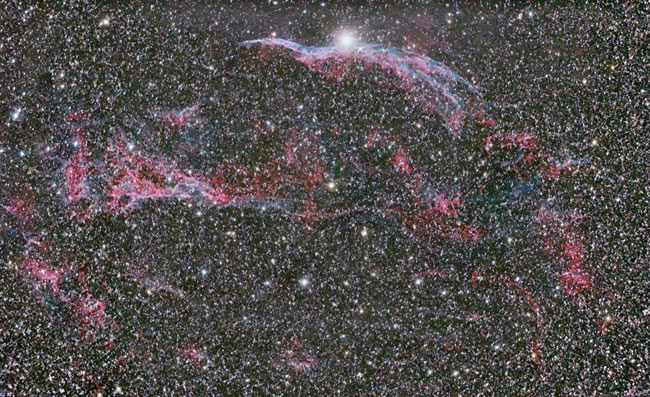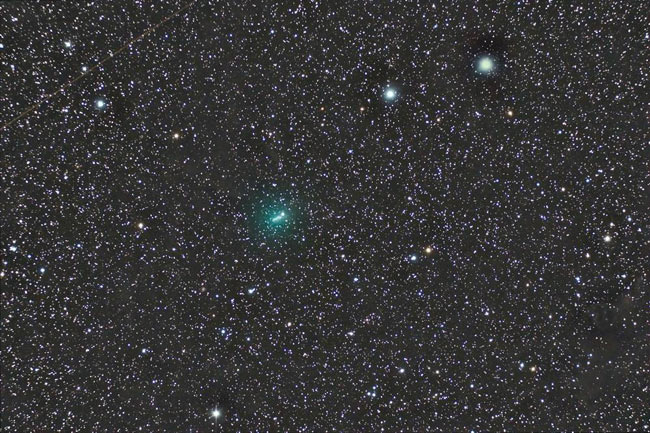


Well, boys and girls its time once again for another installment of my long running series I call Comet Comments. Its fall and moving towards winter quickly and with the cooler temperatures of the seasons comes the icy cold and “frozen dusty snowballs” of our solar system known as Comets. Ah! The site of these should just warm your hearts, I know they always warm mine!
We currently have two of these delightful treats within telescopic view in our night skies and they are fairly easy targets for almost any size scope. Both comets are listed with magnitudes brighter that 9.0 m1 (m1 = total over all magnitude of the comet and coma). Both of these comets are short period comets (orbital periods of less than 200 years) and have been seen before. So their orbits are very well known and a lot of their properties are fairly predictable. To quote a famous comet hunter “comets are like cats, they both have tails and they both do exactly what they want to!” So predicting a comet’s behavior is not an exact science, but the professionals are getting better and the amateurs are even better than that... amateurs contribute most of the data on the cosmic travelers these days and they are the real experts!
The first and most favorably placed of these current comets is 103P Hartley 2 at 7.0 m1. It is currently zipping thru Cassiopeia and moving into Perseus. On October 20th it will pass within 0.12 AU of Earth or about 11.1 million miles... that is pretty close and this little (1.6 km diameter) comet may reach 5.0 m1 at that time. Of course by then it will have moved thru Perseus, Auriga and half way thru Gemini, quick little snowball isn’t it! 103P Hartley 2 has an orbital period of 6.46 years and was discovered in 1986 by Malcolm Hartley at Siding Springs, Australia. On November 4th the Deep Impact space craft will pass within 700 kilometers of Comet 103P Hartley 2 as part of the EPOXI mission: EPOXI combines two targets: the Deep Impact Extended Investigation (DIXI), and the Extrasolar Planet Observation and Characterization (EPOCh). Deep Impact will conduct both missions, the Extrasolar Planet Observation and Characterization during the cruise phase to Hartley 2, and the Deep Impact Extended Investigation at fly-by.
Below is a finder chart for 103P Hartley2 and a couple of recent images to kind of give you an idea how fast this comet is moving and what it looks like. (This is a low resolution version of the chart, click on the image for a higher resolution version).
This chart is made for midnight local time for October 2nd thru 20th as you can see the comet is moving thru a very star rich area of the northern sky and night after night it passes by some very great open clusters.
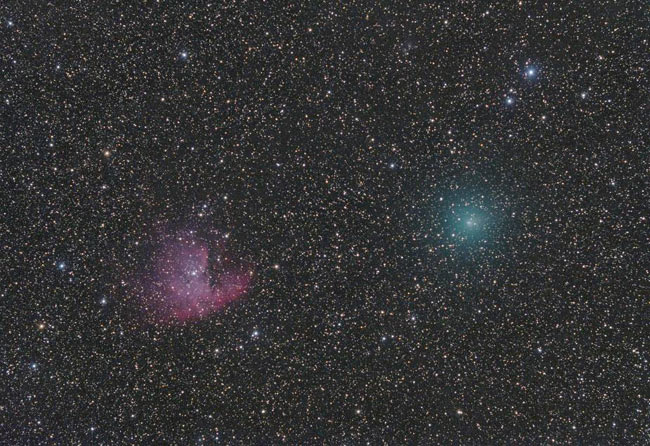
Above is a wonderful image of comet 103P Hartley 2 by Martin G. with a Canon 30D modified and ED80/600 plus a Vixen 0.67x reducer. ISO1600, 4 min. Pacman nebula & Comet 103P Hartley.
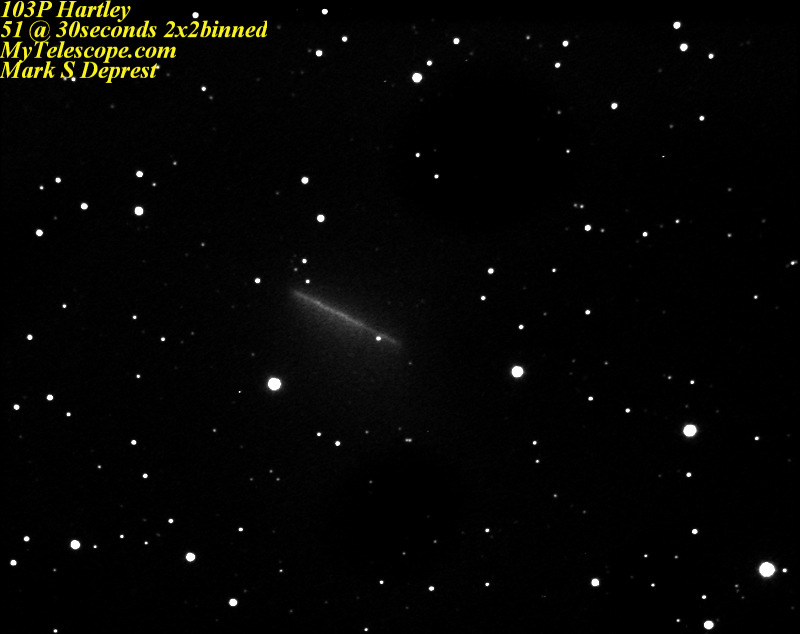
This is a stacked image of (51) 30 second exposures over a period 45 minutes. This shows just how fast the comet is moving!
This was taken remotely on September 27, 2010 with a scope in New Brunswich, Canada.
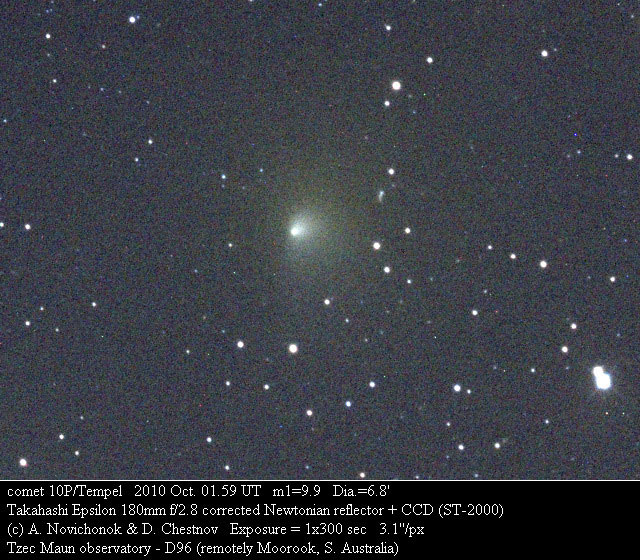
Okay, so much for that one, but I said that there are two comets telescopically visible in our night sky right now, and here is the info on Comet 10P Tempel 2. As you may have already figured out from the lack of “press coverage” comet 10P Tempel 2 is not as spectacular as 103P Hartley 2 as it has already made its closest approach on July 4th and is now beginning to fade. However, this is still a very bright comet at 8.8 m1 and should remain telescopically as it steadily fades out of view in December. Its current position is in southern Cetus and will remain in Cetus thru December looping northward. Comet 10P Tempel 2 was discovered by Ernst Wilhelm Leberecht Tempel on July 4, 1873 and is a rather large comet estimated at 10.6 kilometers in diameter, however it has a low albedo of 0.022, it made a very close approach to Earth back in 1925 when it came with 0.35 AU. With an orbital period of 5.382 years it will make three more passes before it gets really close (0.41 AU) to Earth in August of 2026.
Below is a finder chart for 10P Tempel 2. (This is a low resolution version of the chart, click on the image for a higher resolution version).
This chart is made for 2:00 am local time for October 2nd thru 20th and as you can see Comet 10P Tempel 2 is very low in the southern sky. Below is another image by Clayton Kessler taken at BFSP of the Veil Nebulae complex.
